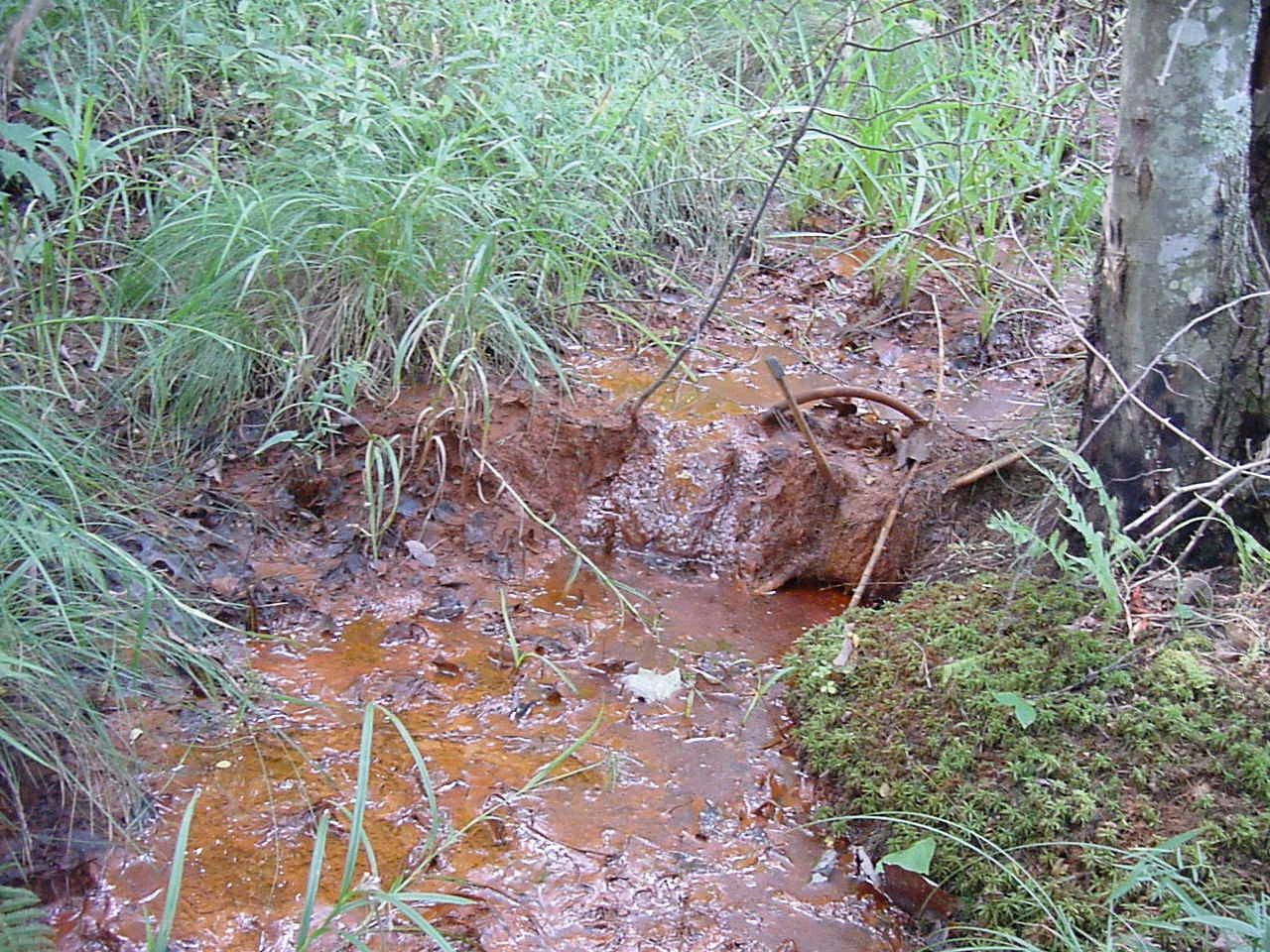
NPS photo.
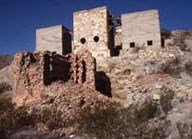
Water Resources
Water is one of the resources most frequently harmed by abandoned mines and wells. Water is also the main vehicle that carries abandoned mineral land impacts beyond the immediate site. Elevated concentrations of metals and increased amounts of suspended sediment, acidity, petroleum, and brine threaten surface and underground water quality and aquatic habitats.
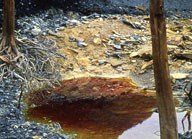
NPS photo
Acid Mine Drainage
Acid is created as metals oxidize in sulfide ore and waste rock. Acid allows toxic metals to dissolve and wash into streams and lakes. Acid mine drainage occurs at only a few of the abandoned mines in the National Park System. At some of these sites, the water coming out of the mines is so acidic that it can actually burn a person's skin.
Metal Contamination
Mining metals requires extracting ore from the ground, crushing the ore to the size of sand grains, and removing the desired mineral. Often the excess material--tailings--is deposited on the surface. During storms and snow melts, water flows over and through the tailings. The tailings still contain relatively large amounts of metals such as lead, zinc, copper, and cadmium. The water interacts with the metals and transports them to nearby streams. Some metals, at concentrations as small as a few parts per million, can damage or kill aquatic plants and animals.
During oil and gas drilling, a circulating fluid called mud is used to remove the cuttings from the well bore. This fluid often contains additives that are laden with heavy metals such as chromium and barium. In the past, when a well was completed, these muds were often left at the site, allowing the metals to leach into streams, lakes, and aquifers.
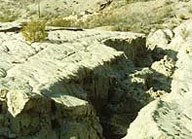
NPS photo
Erosion and Sedimentation
Disturbed lands and unprotected slopes are susceptible to erosion. Uncontrolled surface drainage can remove soils and may make large areas unstable. Every year, sediments from mine sites cause significant damage to downstream resources.
Petroleum and Brine
Unplugged or improperly plugged oil and gas wells pose serious threats to park resources. Leaking well fluids can contaminate surface and subsurface waters that in turn jeopardize the safety of public water supplies. Contamination of this type can continue for years without being discovered. Water supplies for natural springs may also be affected, damaging resources miles away from the contaminated well.
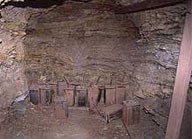
NPS photo
Hazardous Materials
Mining and drilling, like other industrial processes, require a variety of chemicals. Discarded drums and tanks are often found on abandoned mineral lands inside underground passages, buried in waste rock piles, or just haphazardly scattered around the site.
Scenic Resources
While many mines and wells are historically significant and worthy of preservation, many others are not. Piles of trash and debris, open pits, waste rock piles, and access roads blemish the otherwise pristine landscapes of the parks. Surface mines and quarries often have the greatest impacts on scenic vistas. In some cases, hundreds of thousands of cubic yards of material have been removed, making restoration extremely difficult.
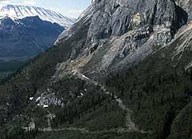
NPS photo
Wildlife and Vegetation
Mining often stripped away not only the vegetation but also the topsoil that is needed to reclaim the site when mining operations cease. The area left behind is barren and incapable of supporting plant and animal life. Bare soil continues to erode and is carried away from the site to nearby streams and rivers. Here, the sediment clogs stream channels, reducing fish habitat and interfering with natural flow patterns. Even when these effects seem minor at first glance, they may impair larger ecological communities. Soils and water contaminated with heavy metals or chemicals from mineral processing may be harmful to wildlife. These contaminants can become increasingly concentrated in animals higher up the food chain in a process called biomagnification. Affected animals could die or become unable to reproduce.
Last updated: December 2, 2020
